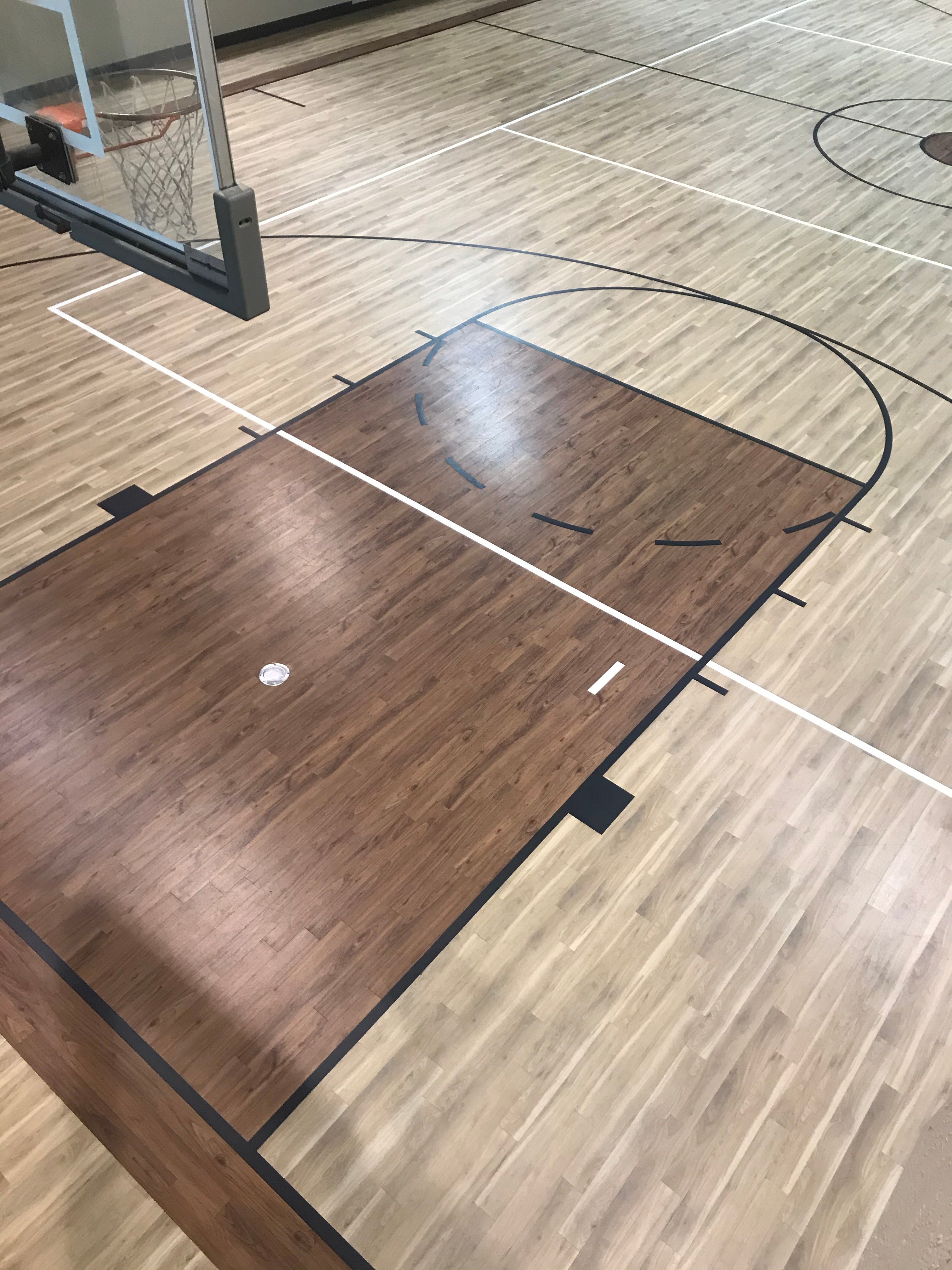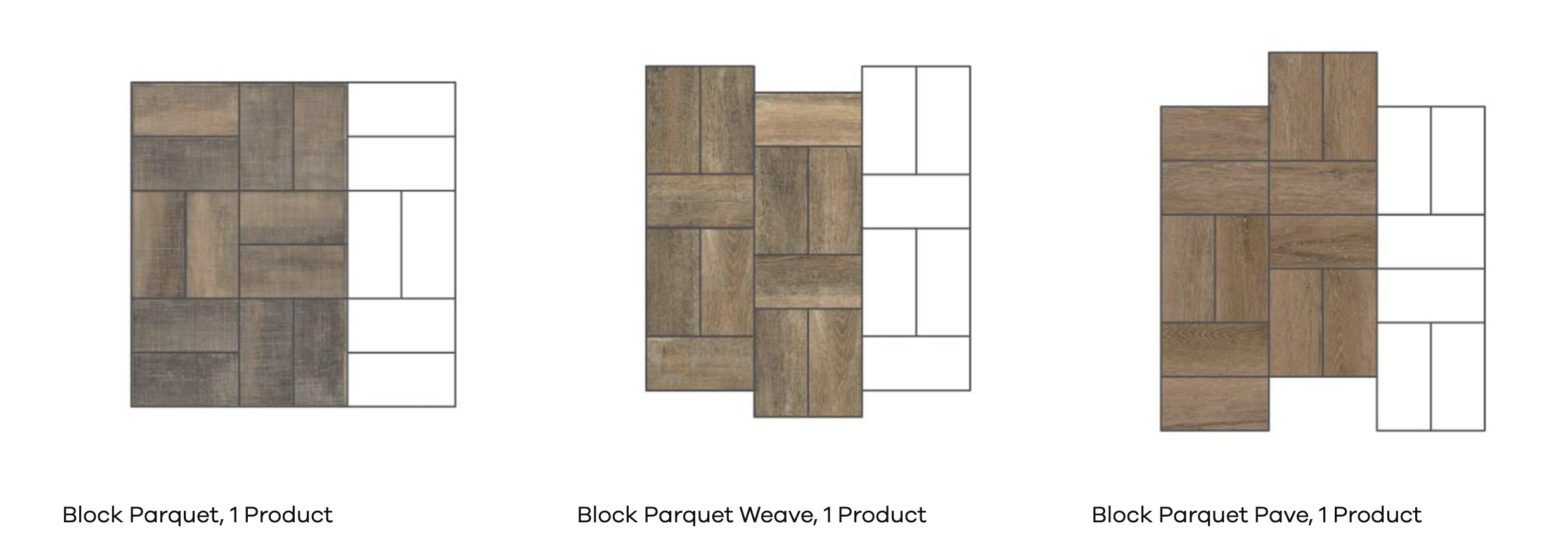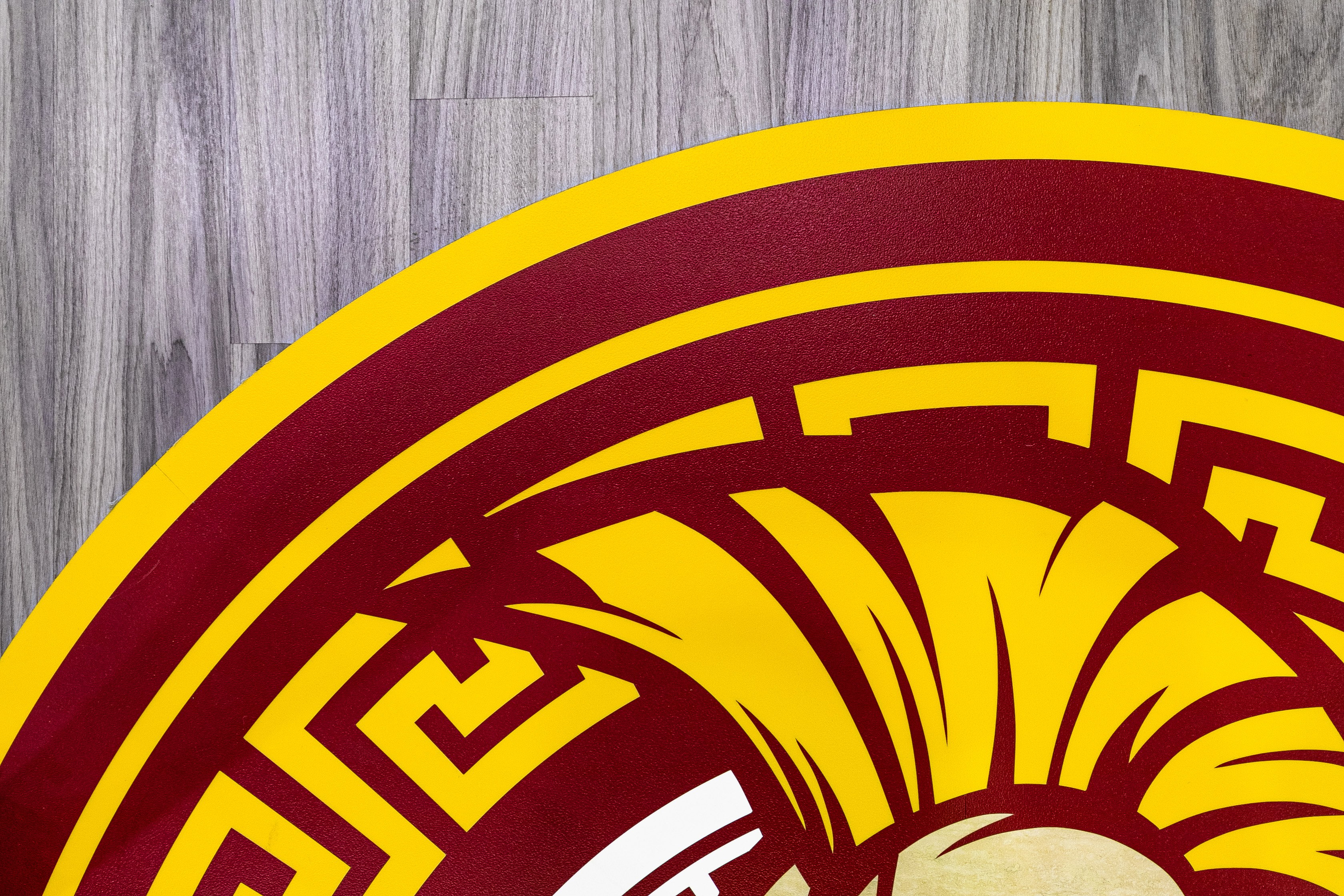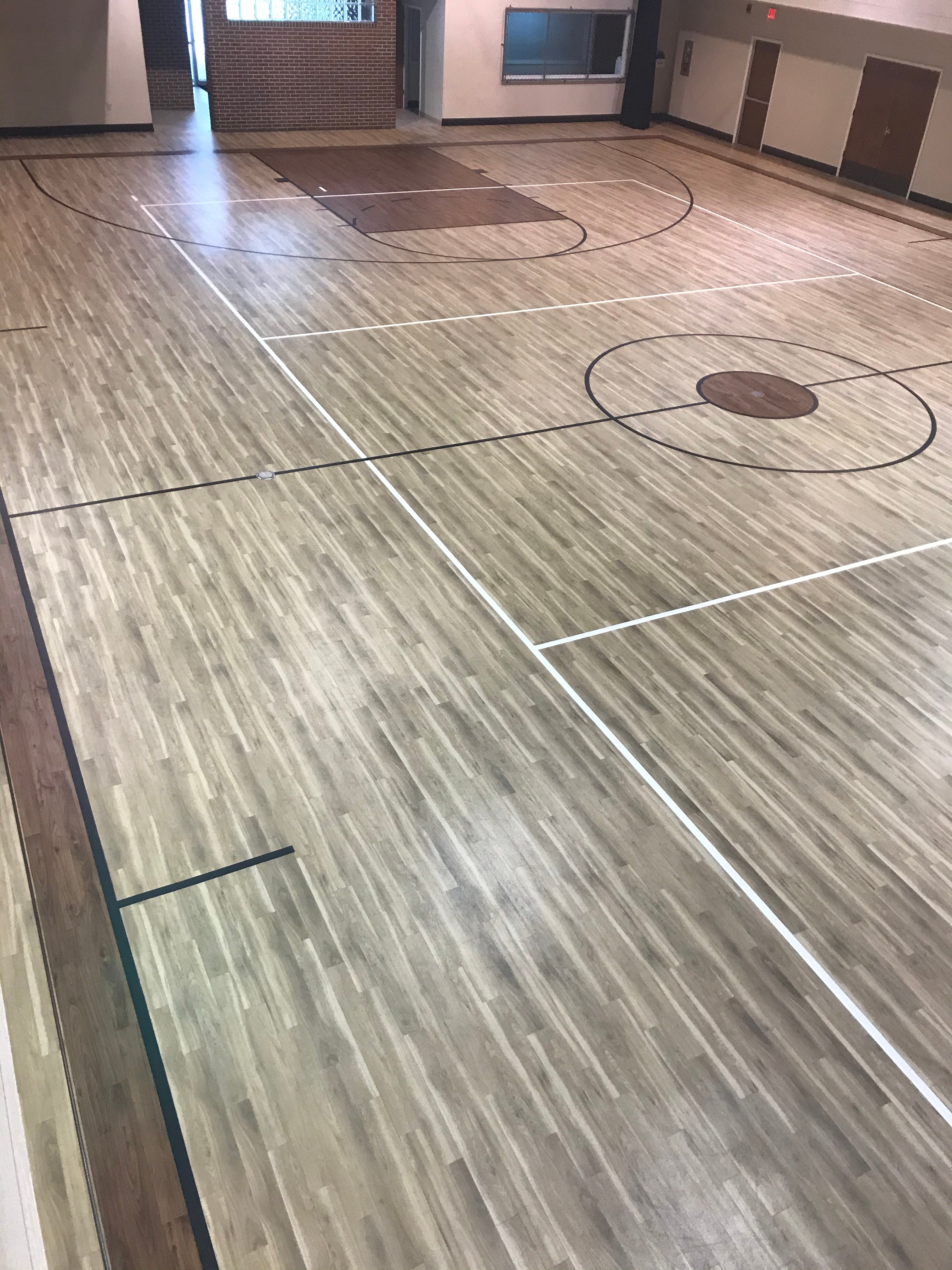When you picture an indoor basketball court, you’ll most likely envision a light-varnished hardwood floor painted with traditional court lines and markings, but is this really the best type of flooring for athletes and amateur hoopsters?
From economics, to safety, to league regulations, there are myriad factors to consider, including flooring options beyond traditional hardwood.
What should I consider when choosing basketball court flooring?
Are all gym floors created equal? Is the flooring in an elementary school gym the same as that in a high school or university? Not really.
According to the The International Basketball Federation (FIBA), which sets the standards for specific requirements, the choice of flooring is based on three aspects: financial, technical and sporting functionality.
Financial considerations include cost of installation and maintenance for the amount of time the space will be used. Technical specifications include sourcing material and installation from experienced, qualified vendors.
Sporting functionality is more complicated. Here’s a rundown of the basic requirements:
- Elasticity enables floors to deaden the impact of jumping and running and affect both athletes’ muscles and the performance of the ball.
- Point elasticity refers to the materials comprising the overlay flooring and must be consistent across the entire surface.
- Area-elasticity refers to the subfloor including joists that must be stiff yet flexible.
- Uniformity means the playing area must be perfectly level.
- Shock absorption measures the impact absorbed by the floor as opposed to returning the energy force to the athlete.
- Deformation refers to how the elasticity, viscosity and thickness of the floor responds to pressure.
- Superficial friction has different optimum values for different sports, but the foot must be able to move across the surface without risk of spraining.
- Ball bounce uniformity means the floor shouldn’t absorb so much of the bounce that it’s difficult to play and must be consistent across the entire surface.
- Color must be dull with a factor of light reflection between 0.25-0.50 so court markings are clearly visible.
- Thermal insulation increases comfort and affects energy consumption.
- Acoustic insulation ensures running, jumping or bouncing the ball doesn’t cause excessive vibration.
- General safety guidelines including fire resistance, no toxic substance release, ability to withstand the load of sports equipment and no splinters.
According to Sean DeVore, District Manager with Mannington Commercial, to determine the best flooring product, you must understand who will be using the surface and how often, and learn the specific regulations for that level of play.
A private high school court or a church social area with a basketball court incorporated into the floor, for example, is well-suited for an LVT (luxury vinyl tile) product.
“I would highly recommend LVT in a private high school,” DeVore explains. “Typically, those gymnasiums have fewer seasonal basketball games than a normal high school does. In a regular high school, they use the gym for multiple different things all throughout the day and basketball games on the weekends.”
You Might Like: The Specifiers Ultimate Guide to Luxury Vinyl Tile (LVT)
Courtesy of Sean DeVore
Basketball’s Traditional Flooring Material: Wood
For years, most indoor basketball courts have been constructed from wood with different types of substrate construction underneath to prevent moisture, provide stability and allow for some cushion.
“If you've been in a basketball gym, you can hear almost a hollow sound when the kids run down the court,” says DeVore. “That's the court’s elasticity, allowing for that movement while the basketball players run up and down.”
Typical construction is wood planks or parquet like that used at the famed Boston Garden, the Celtics home court. Parquet is a combination of small strips of wood locked together forming a pattern within a 12-inch square or a 24-inch square.
Both wood planks and parquet are quality materials, but they certainly aren’t the only option for quality courts.
Is LVT The New Standard For Basketball Gyms?
LVT is being used in lower education facilities, church gyms, and rec areas. As of now the only reason it’s not being used at the college and professional level is because it’s not typically thought of as the product to use in that environment. You are changing a mind set when you use LVT over wood in a public high school gymnasium or college level playing surface.
Traditional gym floors have always been wood. The wear layer technology and the limitless amount of LVT patterns available, makes LVT a definite challenger to the traditional wood floor.
Additionally when doing logos, the floor is the logo in LVT, it is not painted on or laminated on as a sticker.
Related: The Best Flooring For Schools and Education Spaces
Courtesy of Marcus Andrew Photography
How does safety factor in when considering LVT flooring?
Safety encompasses a wide spectrum of characteristics in sports court flooring. An obvious consideration is impact from a fall.
According to DeVore, LVT flooring isn’t any different from wood in performance. However, it’s imperative that the LVT is installed using an epoxy adhesive to ensure planks don’t break loose when athletes are running the court in shoes that grip the floor. DeVore explains that the slip coefficient on Mannington LVT is about .6 dry & 1.05 wet for a rubber sole, which he surmises is higher than a polyurethane sealed wood floor.
“If you get sweat or anything on the wood floor,” he says, “they promptly wipe it up with a towel because it's so slippery. Whereas, the LVT is going to be less slippery wet than what the polyurethane is, so it's going to have more grip to it.”
How does overall cost compare between LVT and wood flooring?
Budget is always a consideration when planning a project. Let’s look at both installation and maintenance.
A definite benefit of an LVT floor is that you don't have to apply finish after it's been put down. It's easy to maintain. A typical wood basketball court has to be sanded down and refinished with polyurethane about once every three years, although some schools could get away with every six years, which could run about $60,000.
“So if your return on investment with LVT is that in three years, you save $60,000,” says DeVore. “Maintenance is relatively simple; you just have to damp mop it or run an auto scrubber on it, it’s a definite benefit.”
According to DeVore, LVT is less expensive to install than wood, and the only argument he’s heard thus far is that it isn’t a “traditional basketball court.”
While he hasn’t personally overseen an LVT installation in a gym with excessive use, such as you’d find in a 5A high school where the facility is used daily throughout the year, he has installed in several private schools and large church facilities as well as busy restaurants and hospitals. It’s performed well for years, he says.
Related: How to Clean and Maintain Commercial Hard-Surface Flooring
Courtesy of Sean DeVore
How is court customization affected by using LVT?
A major factor in selling a court surface is customization. Adapting to the intended use is imperative, especially for courts that will be used for multiple sports.
Through proprietary technology and expertise, Mannington Commercial LVT flooring, for instance, can easily be designed for any use.
DeVore cites an example where he worked with the Mannington customization team to use a combination of Amtico and Spacia LVT products to create a floor that met both budget and use requirements of the customer.
“Even though Spacia is 20 mil and Amtico is 40 mil, referring to the wear layer thickness. One Mil is 1/1000th of an inch. 20mil is industry standard for commercial use, 40mil is used in extreme high traffic areas. They're both roughly the same overall thickness, two and a half millimeters,” says DeVore.
“So I used Amtico court lines and Spacia flooring because the client didn't have the budget to do the whole basketball court in Amtico. It worked out just fine.”
The center court logo is an iconic part of a court. With LVT, the logo can easily be custom designed, created and installed by experienced technicians.
“You need qualified installation people who are willing to take time because the custom logos come pre-cut like a puzzle,” says DeVore. “Each piece around the logo has to be precisely cut to match, then laid correctly to fit.”
What else factors into a sound decision on determining the court material?
Just as many gym floors serve several purposes, there are multiple considerations when determining the best way to construct the court surface.
The bottom line is to make sure you know who will be using the court and how they’ll use it. Courts for grades K through 12 and college have different requirements than other spaces.
Make sure you fully understand your user’s profile to build a court that will be a fiscally responsible investment as well as safe and functional for those who ultimately play there.
Would you like to learn more about LVT?
We've got a guide for you. Learn about the basics of LVT, Rigid Core LVT, how to choose the right LVT and help you ask and answer the right questions to specify LVT for your specific commercial end use. 👇





